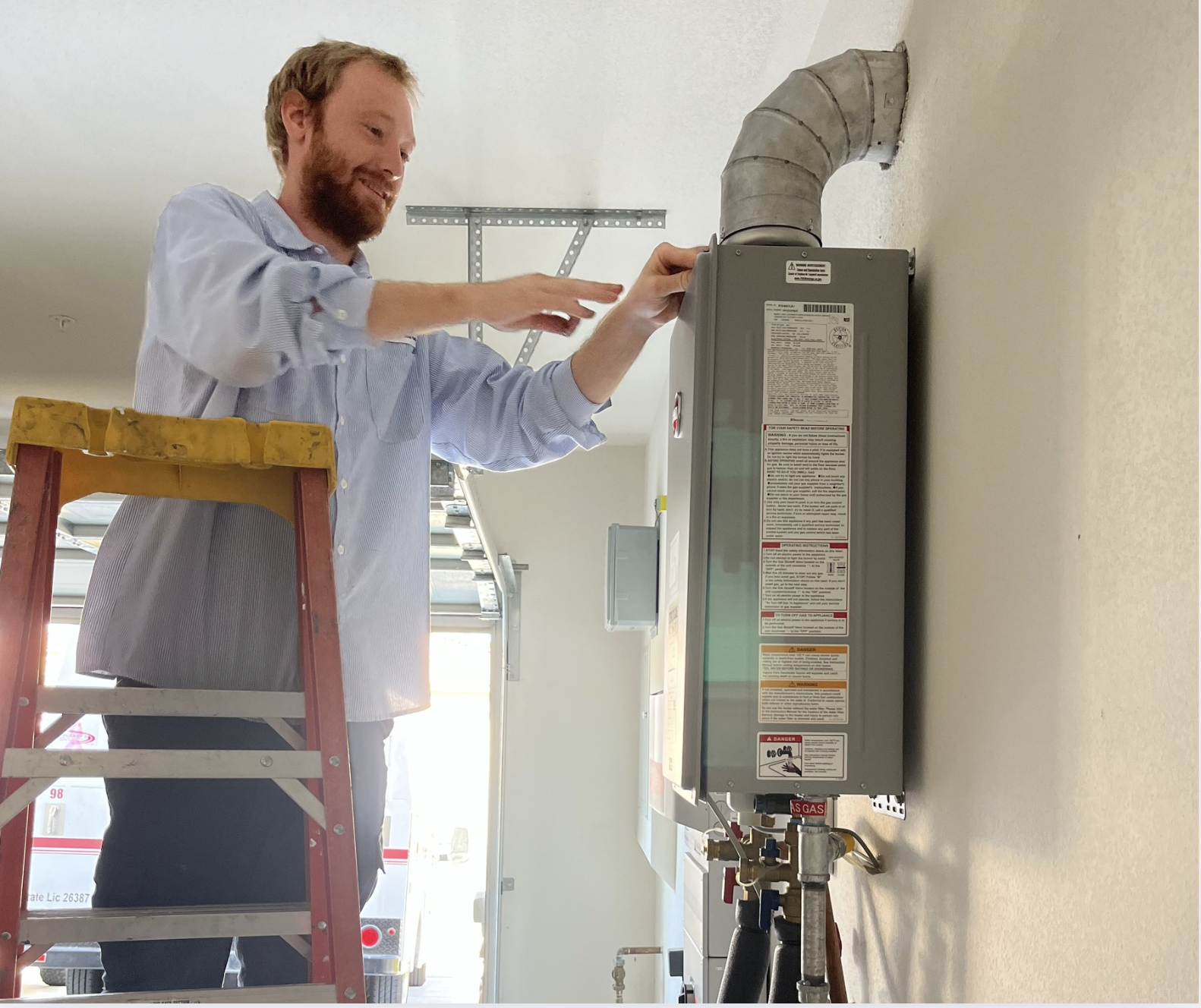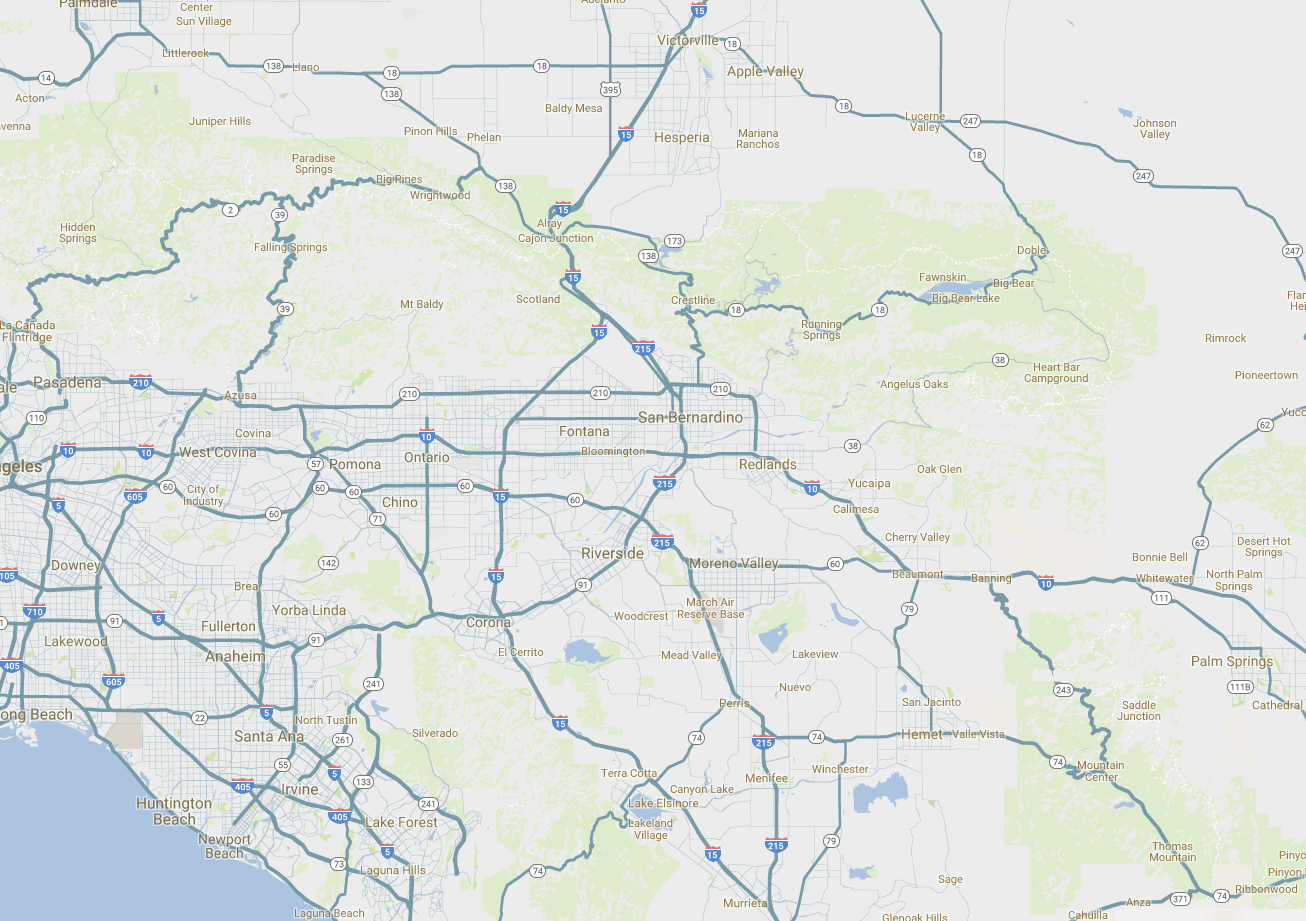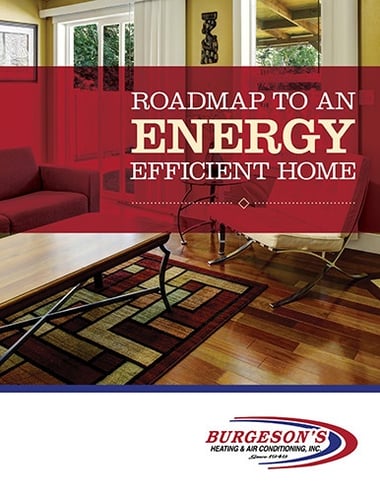%20(1).png?width=2880&height=1152&name=HVAC%20Billboard%202024%20(30%20x%2012%20in)%20(1).png) Pricing Guide: Water Heater Installation Cost
Pricing Guide: Water Heater Installation Cost
This is a hard question to answer because every water heater installation is different. However, to help you budget for your water heater installation project, we’ll provide a broad price range below.
The cost to install a water heater in Southern California can vary greatly, ranging anywhere from $2,000 to $9,000. This broad price range reflects the unique factors that influence each installation, such as the type, size, and efficiency of the water heater, as well as the complexity of the job.
If you’re wondering how much to install a hot water heater, this guide provides detailed insights into the factors that impact water heater installation cost to help you make an informed decision.
Need a down-to-the-penny estimate for your water heater installation? Just call Burgeson’s. We offer free estimates and flexible financing for your water heater installation project.
COST FACTOR #1: THE TYPE OF WATER HEATER
The cost to install a water heater depends heavily on whether you choose a tank or tankless system:
- Tank Water Heater: These are typically less expensive to install but are less energy-efficient than tankless systems.
- Tankless Water Heater: Though the upfront installation cost is higher, these systems provide long-term energy savings since they heat water on demand.
If you’re unsure which type aligns with your needs, consult Burgeson’s plumbing experts for a personalized recommendation.
COST FACTOR #2: THE SIZE/CAPACITY OF THE WATER HEATER
The size of the water heater directly impacts water heater installation cost. Larger-capacity systems typically cost more. How Much to Install a Hot Water Heater? Well, Here’s an average cost breakdown:
|
Tank Size (Gallons) |
Average Cost (Including Installation) |
|
30-40 Gallons |
$2,000 - $3,000 |
|
50 Gallons |
$2,100 - $3,200 |
|
75 Gallons |
$4,000 - $7,500 |
|
Tankless Systems |
$5,000 - $9,000 |
THE TANK’S CAPACITY
The capacity indicates how much hot water the tank can hold when fully filled. Larger households may require higher-capacity systems.
THE SYSTEM’S FIRST-HOUR RATING
This measures how much hot water the tank can deliver in the first hour of use. A higher first-hour rating means more hot water is available quickly.
THE SYSTEM’S RECOVERY RATE
The recovery rate determines how quickly the water heater can replenish hot water after the tank is depleted, crucial for large households.
THE SYSTEM’S FLOW RATE
For tankless systems, flow rate (measured in gallons per minute or GPM) indicates how many appliances can run simultaneously without losing hot water.
THE TEMPERATURE RISE NEEDED
This refers to the amount of heating required to bring water from its ground temperature to the desired temperature. Systems with higher temperature rise capabilities often cost more.
COST FACTOR #3: THE EFFICIENCY OF THE WATER HEATER
Water heater efficiency significantly impacts energy costs over the unit’s lifetime. While higher-efficiency models cost more upfront, they provide long-term savings. Efficiency is measured by the (U)EF rating (Uniform Energy Factor). The higher the rating, the more efficient the system.
For those concerned about utility bills, investing in a high-efficiency system is often worth the additional water heater installation cost.
COST FACTOR #4: THE DIFFICULTY OF INSTALLATION
Complex installations increase labor costs, contributing to the overall cost to install a water heater. Factors that complicate installations include:
- Tight or enclosed spaces
- Converting from electric to gas systems or vice versa
- Modifying gas lines or venting
- Ensuring compliance with safety codes
Discuss potential challenges with your contractor to avoid unexpected expenses.
COST FACTOR #5: THE CONTRACTOR YOU CHOOSE
The contractor you hire plays a significant role in determining how much to install a hot water heater. While budget-friendly options may seem appealing, they can lead to poor installations. To ensure quality work, verify that the contractor:
- Is licensed and insured in California
- Has experience with water heater installations
- Provides upfront written estimates
- Offers references from satisfied customers
- Has longevity in the community fostering the assurance that they will be available to their customers today and well into the future.
At Burgeson’s, our installations include an extended warranty as well as a 1-year labor warranty and a 10-year manufacturer’s warranty, ensuring peace of mind.
PLUMBING MODIFICATIONS FOR INSTALLATION
Depending on the age and setup of your home’s plumbing system, modifications may be required, which can increase costs. Examples include:
- Replacing corroded pipes
- Updating outdated plumbing to comply with modern standards
- Adjusting pipe layouts to accommodate a new water heater location
These adjustments can influence the water heater installation cost but are often necessary to ensure proper operation and safety.
FUEL TYPES: NATURAL GAS, PROPANE, AND ELECTRIC
The fuel type you choose affects both installation and operational costs:
- Natural Gas: Generally cheaper to operate but may require additional gas line modifications.
- Propane: More expensive than natural gas but ideal for homes without natural gas access.
- Electric: Standard - Often less expensive to install but can result in higher monthly energy costs compared to gas systems. Heat Pump - More expensive to install but the most efficient of all the options
Fuel type is an important consideration when estimating how much to install a hot water heater that meets your needs and budget.
PERMITS
In California, permits are often required for water heater installations to ensure compliance with safety codes. Permit costs typically range from $50 to $300, depending on your location.
Your contractor should handle permit applications and inspections as part of their service. Ensure this is included in their estimate.
WANT AN ESTIMATE FOR YOUR WATER HEATER INSTALLATION?
Call Burgeson’s if you’re looking for a licensed, insured, and experienced plumber to install your water heater. With over 75 years in business, we do things the right way, making sure to submit permits and get the job done right the first time.
We start every installation with a FREE consultation. Our experts will inspect your home, discuss your needs and budget, and recommend the perfect system. Plus, we offer flexible financing options to fit your budget.














